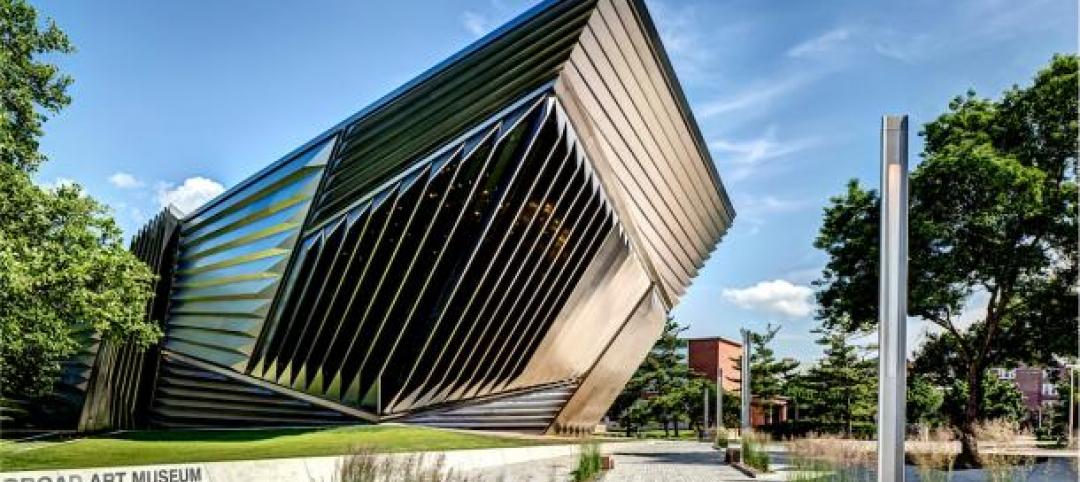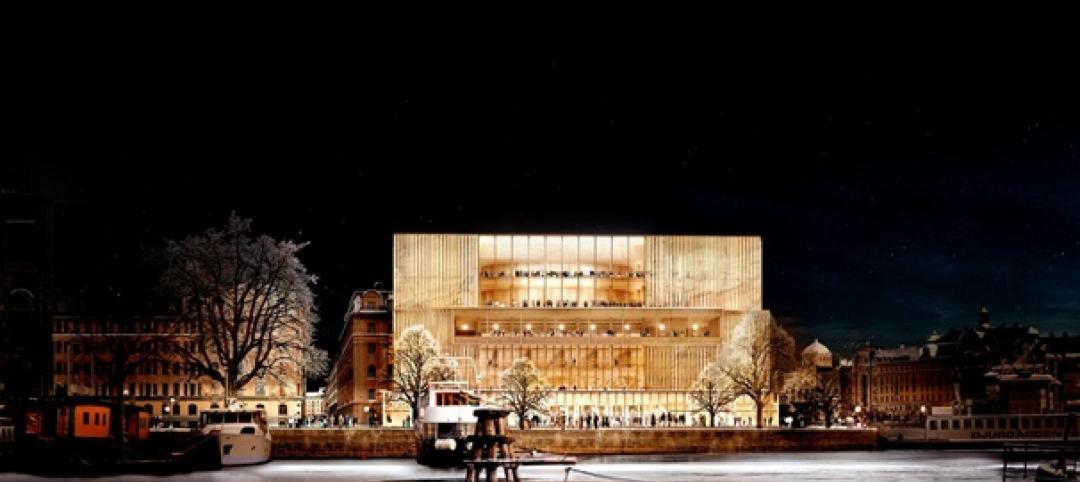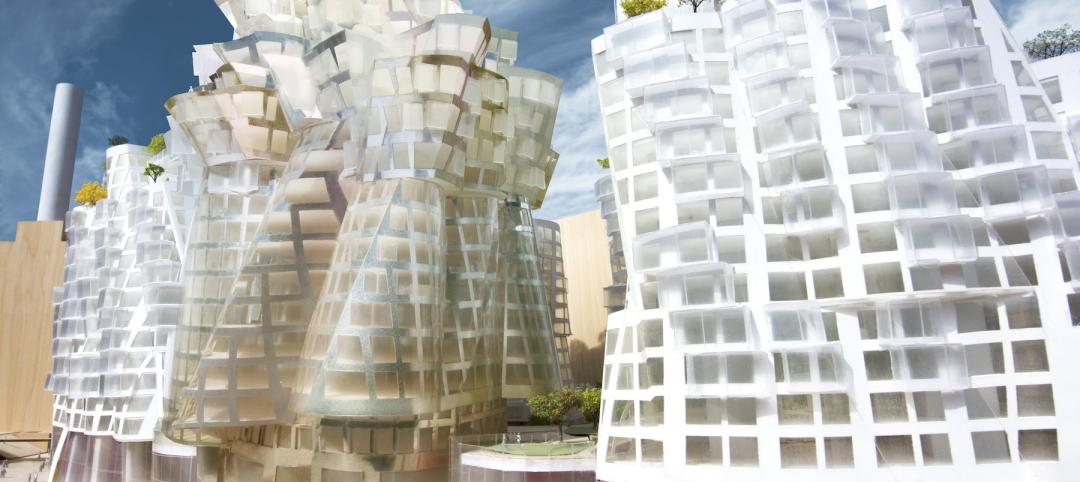The Virginia State Capitol Building—originally designed by Thomas Jefferson and almost as old as the nation itself—has proudly served as the oldest continuously used Capitol in the U.S.
But more than two centuries of wear and tear put the historical landmark at the head of the line for restoration.
The Building Team—led by the Gilbane Building and Christman Companies—installed entirely new M/E/P systems and added a 27,000-sf underground expansion featuring a visitors' center and ADA-compliant main entrance, office space and meeting rooms, and improved centralized security management.
However, digging near the building's foundation to create the underground expansion was no simple task. To prevent the building from moving, a slurry wall had to be constructed in a six-month process that involved excavating 10-foot sections, pumping bentonite grout to prevent the soil from collapsing, and then replacing the grout with concrete once each section was completed.
With the new entrance, visitors pass through the surrounding landscape, avoid climbing stairs, and are treated to a spectacular view from the south portico—the way Jefferson originally intended for the building to be viewed.
“Getting the tunnel in and making it work was quite a feat,” observed BD+C Renovation Awards judge K. Nam Shiu, P.E., S.E., MISE, VP, Walker Restoration Consultants, Chicago. “This project involved a great degree of discipline.”
To preserve the Capitol's historical splendor, dating back to 1906 when the east and west wings were added, extensive inspection, study, and research had to be conducted. Core samples were taken from the portico columns and key interior locations to assess the building's condition. Radar, metal detection, thermography, and ultrasound were utilized to assess the building's structure and layout. Scientists even chiseled away at the rotunda walls to determine the original paint color.
While working on the building's exterior, it was discovered that the stucco had been sealed with paint that prevented the building from breathing, thereby creating moisture and mold problems. Every speck of paint had to be removed, but due to the building's historical significance, only free-standing scaffolding could be utilized.
The stucco also had to be stripped so that damaged bricks could be replaced. Deteriorated mortar joints had to be tuck pointed with fresh, waterproof mortar. Finally, natural hydraulic lime stucco was applied to allow the building to breathe.
While all of the exterior doors were replaced and the building received a new roof, the original windows were temporarily removed, shipped to Kansas City, and restored. Even the original doorknobs bearing the Great Seal of Virginia were restored.
As for the Capitol's century-old granite steps, they had to be temporarily removed in sections weighing around 1,400 pounds in order to be repaired and restored. Once all the construction was completed, the steps were carefully returned to their original location.
During the meticulous process of restoring the Capitol, some areas of the building were found to be more deteriorated than projected. In addition, extensive testing of historic materials, in-depth historical research, and the application of specialized preservation techniques added to the project's complexity.
Judge Nam Shiu also pointed out the challenge of working on a hill and recognized the team's restoration efforts: “They also preserved all the environments and did not disturb the original entrance.”
The Building Team preserved Jefferson's legacy so future generations can enjoy this important American landmark.
Related Stories
| Apr 23, 2014
Mean and Green: Top 10 green building projects for 2014 [slideshow]
The American Institute of Architects' Committee on the Environment has selected the top ten examples of sustainable architecture and ecological design projects that protect and enhance the environment. Projects range from a project for Portland's homeless to public parks to a LEED Platinum campus center.
| Apr 16, 2014
Upgrading windows: repair, refurbish, or retrofit [AIA course]
Building Teams must focus on a number of key decisions in order to arrive at the optimal solution: repair the windows in place, remove and refurbish them, or opt for full replacement.
| Apr 15, 2014
12 award-winning structural steel buildings
Zaha Hadid's Broad Art Museum and One World Trade Center are among the projects honored by the American Institute of Steel Construction for excellence in structural steel design.
| Apr 15, 2014
Chipperfield's sparkling brass-clad scheme selected to be new home of Nobel Prize
The distinctive building, with its shimmering vertical brass elements and glass façade design, beat out two other finalists in the Nobel Center architectural competition.
| Apr 11, 2014
First look: KPF's designs for DreamWorks in the massive Shanghai DreamCenter
Two blocks of offices will be centerpiece of new cultural and lifestyle district in the West Bund Media Port.
| Apr 11, 2014
Start your engines: Ferrari plans to build first ever hotel
Clad in the carmaker's signature "Ferrari red," the hotel will resemble the grill and hood of one of its iconic cars.
| Apr 9, 2014
Colossal aquarium in China sets five Guinness World Records
With its seven salt and fresh water aquariums, totaling 12.87 million gallons, the Chimelong Ocean Kingdom theme park is considered the world’s largest aquarium.
| Apr 9, 2014
Steel decks: 11 tips for their proper use | BD+C
Building Teams have been using steel decks with proven success for 75 years. Building Design+Construction consulted with technical experts from the Steel Deck Institute and the deck manufacturing industry for their advice on how best to use steel decking.
| Apr 8, 2014
Gehry, Foster unveil plans for Battersea Power Station redevelopment [slideshow]
Phase 3 of the massive redevelopment of the London landmark will include more than 1,300 residential units, a 160-room hotel, and 350,000 sf of retail space.
| Apr 2, 2014
8 tips for avoiding thermal bridges in window applications
Aligning thermal breaks and applying air barriers are among the top design and installation tricks recommended by building enclosure experts.
















